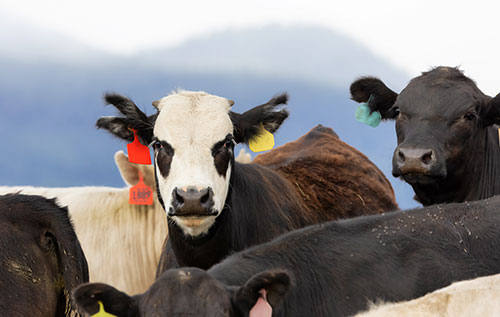ICAR Conference 2022, Montreal
Animal Identification – New developments and future possibilities
The conventional plastic ear tag is still the core of many national animal identification systems worldwide. For some years now, however, it has been either supplemented or completely replaced by electronic animal identifiers. The so-called transponders offer numerous advantages in the automation of process chains in animal husbandry and, through intelligent use of the data, great potential in terms of animal health and welfare. In the Technical session „Animal Identification – New developments and future possibilities” of the ICAR Conference, international experts gave an overview of current developments in the ID sector.
Data pool Biometrics
It is no wonder that sensors for recording biometric data such as body temperature, hydration, breathing rate, pulse, blood pressure or blood oxygen are increasingly finding their way into animal husbandry. The near-ubiquitous availability of cellular networks, local wireless networks and cloud-based data processing means that even large volumes of data can be linked, processed and analyzed in real time. Combining information from multiple systems provides a holistic view of animal health at herd and individual animal level and forms the basis for effective management based on real-time data.
Link to the presentation of Michael McHugh, Wonderknow, USA: Black And Red Modern Business Proposal Presentation (icar.org)
Biometrics for Animal Identification
But such new technologies are not available or practical everywhere. India, for example, has the world's largest cattle population with more than 300 million animals, but many of them are kept on smallholder farms with two to five animals on average. Single-animal identification based solely on plastic ear tags to track ownership and change of ownership or to enable disease control has not proven effective. Too often ear tags are lost or intentionally removed. A major and unresolved problem in the Hindu-majority country is cows that are taken out of milk production but cannot be slaughtered for religious reasons. They are often abandoned and left to fend for themselves so that they do not have to be fed any longer.
For individual animal tracking, an additional and permanent identification system easy to use and based on biomarkers is required. In a pilot project, therefore, muzzles and facial features were recorded on over 2,000 cows of 8 breeds via the camera of Android cell phones (version 6 or higher) and evaluated via an app. Smart phones and the internet are widespread in India and therefore an easy to use technology. To ensure consistent data quality, a deep-learning model was used to help compensate for blurred or poorly exposed images as well as unfavorable shooting angles. This required multiple images of the muzzle and head of each animal from different perspectives.
By combining deep learning, image processing and image recognition algorithms, 92-95% accuracy in animal identification based on muzzle images has been achieved so far, which will gradually improve with the number of validations in the field. With the additional metadata such as geo-location, timestamp, ear tag number and owner data collected during image capture by the app, this simple biometric system can be a good complement to the official identification system via ear tags.
Link to the presentation of Dr. Sujit Saha, National Dairy Development Board, India : Microsoft PowerPoint - 2022.06.02_10h45_Montreal1_SujitSaha.pptx (icar.org)
GPS tracking
In addition to animal health, locomotion and disease control, there are other requirements and uses for animal identification, especially in countries with predominantly pasture-based livestock, such as tracking animal movements or improved pasture management. For this purpose, electronic LF or UHF animal identifiers with additional GPS technology offer extended possibilities.
Link to the presentation of David Smith, CERES tag, USA: ICAR Conference Presentation
The progress made possible by animal identification is enormous. However, it also requires an international framework that enables the rapid introduction of improved technologies for identification, traceability and additional functions, while not losing sight of the requirements for the quality of the products for the benefit of animals and humans. The International Committee for Animal Recording (ICAR) has set itself precisely this goal and, together with its experts, is also developing requirement profiles and certification programs for new technologies. In the field of animal identification, DLG TestService GmbH is one of three ICAR-recognized testing laboratories worldwide and has been supporting the ICAR Subcommittee Animal Identification with its know-how for many years.
Author: Susanne Gäckler, DLG

